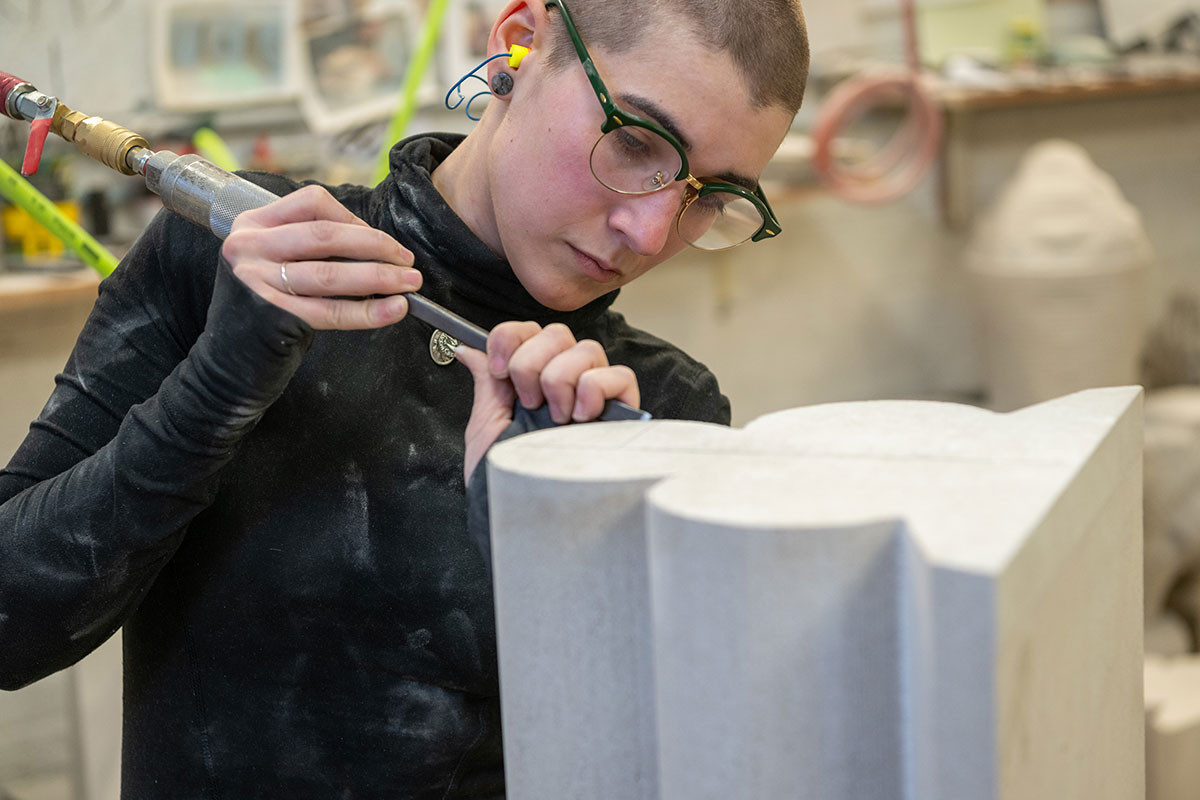This year’s Smithsonian Folklife Festival, which will take place July 2–7, 2025, on the National Mall, will feature Next Generation Artisans in the Traditional Building Trades as part of the Youth and the Future of Culture program.
Traditional building trades are the skills and knowledge that have been historically used in architectural work. They are a form of cultural expression and a link to the past, passed down through generations as a way of preserving the crafts that shape and sustain communities’ built environments.
At the Festival, mentors and apprentices from eight organizations will share their trades through demonstrations, interactive workshops, hands-on activities, and discussions. The trades represented include stone carving, decorative painting, preservation carpentry, stone masonry, blacksmithing, ornamental plastering, and more.
Participating artisans are coming from several local organizations: The Campaign for Historic Trades in Baltimore, Maryland; National Park Service Historic Preservation Training Center Traditional Trades Advancement Program in Frederick, Maryland; National Trust for Historic Preservation HOPE Crew in Washington, D.C.; George Washington’s Mount Vernon Preservation Trades Internship Program in Mount Vernon, Virginia; and the Washington National Cathedral Earthquake Restoration Project in Washington, D.C.
There will also be representatives from the American College of the Building Arts in Charleston, South Carolina; the New Orleans Master Crafts Guild in New Orleans, Louisiana; and the John Canning & Co. Decorative Painting, Restoration and Preservation in Cheshire, Connecticut, sharing their skills and stories on the National Mall.
Curator Marjorie Hunt hopes that featuring these artisans will not only raise awareness of their crafts and bring attention to their high levels of skill but also help young people realize that it is possible to have a career in the traditional building trades.
“This is traditional knowledge that’s centuries old,” Hunt said. “It’s hands-on knowledge that’s learned experientially, being exposed to master artisans who have this knowledge so that they can impart it to you. So, there is this desire to raise awareness of the important role of master craftspeople in preserving our built environment—in preserving historic buildings that hold memory, history, and meaning for communities. You can’t preserve our past, embodied in these structures, if you don’t preserve the skill and knowledge of the people who do the work.”
Over the past decade, Hunt has seen a concerted effort in the traditional trades to create opportunities for young people from all backgrounds.
“We’re focusing on intergenerational transmission,” she said. “It’s really important that there can be this connection between the experienced craftspeople and young people learning. I think the building arts are in good hands with this new generation.”
Sponsors
The Next Generation Artisans program received support from the Richard H. Driehaus Foundation, 1772 Foundation, Richard Hampton Jenrette Foundation, Smithsonian Women’s Committee, and University of Notre Dame School of Architecture. Federal support comes from the American Women’s History Initiative Pool, administered by the Smithsonian American Women’s History Museum. In-kind support comes from the National Park Service Historic Preservation Training Center.
About the Smithsonian Folklife Festival
Founded in 1967, the Smithsonian Folklife Festival promotes folk and traditional practices and honors those who sustain them. This two-week event provides a platform on the National Mall of the United States—America’s front lawn—for musicians, dancers, artisans, cooks, and others to share stories of culture, creativity, and community with a broad public. As one of five congressionally mandated national celebrations, the Festival has become an international model for research-based public programming.
Learn more about Next Generation Artisans at the 2025 Smithsonian Folklife Festival. For media inquires, email folklife@si.edu.
Rebecca L. West is a digital public history intern at the Center for Folklife and Cultural Heritage and a graduate student at George Mason University.


